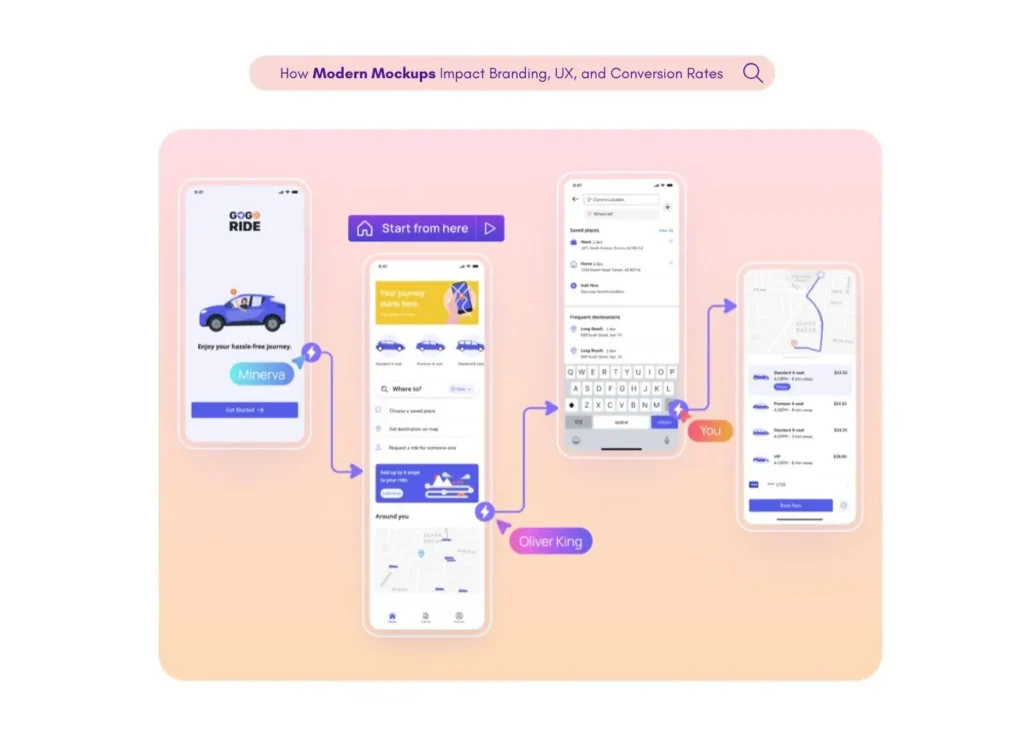In the digital product realm, crafting a product roadmap is vital. This strategic tool outlines the journey to achieve business goals. It aligns teams and guides product development. However, creating a successful roadmap is not without challenges. Common pitfalls can derail the process, leading to wasted resources and missed opportunities. Recognizing these pitfalls is the first step to avoiding them.
In this post, we’ll explore these common mistakes and offer strategies to steer clear of them. Our goal is to help you create an effective product roadmap that delivers value to customers and stakeholders alike.
What is a Product Roadmap?
A product roadmap is a strategic plan that outlines the future development of a product. It serves as a high-level guide, detailing the direction and progress of the product over time. This roadmap is essential for product managers, as it helps them communicate the strategic vision to key stakeholders. It ensures everyone involved understands the valid product strategy and the steps necessary to achieve it. By setting out the upcoming features and releases, a product roadmap aligns the team’s efforts with the company’s goals. It’s a tool for prioritization, helping to decide which tasks are essential and should be tackled first.
The Importance of a Clear Product Roadmap
A clear product roadmap is crucial for guiding a product team. It acts as a shared vision that lays out the path to success. With it, product managers can effectively communicate the product vision to cross-functional teams and stakeholders. This clarity ensures everyone is working toward the same goals and understands the priorities.
Moreover, a well-defined roadmap supports informed decision-making. Using data and customer feedback, helps teams weigh options and make trade-offs. This aspect is essential when resources are limited, and not all desired features can be developed simultaneously.
Additionally, market conditions and customer needs can shift rapidly. A clear roadmap allows a product team to adapt swiftly to these changes. It helps in tweaking the development process without losing sight of the overall strategy.
A clear roadmap aids in the efficient allocation of time, budget, and resources. It prevents the team from falling into the trap of unrealistic expectations by setting achievable goals. This strategic tool keeps everyone aligned and focused on delivering the most value to the customer base.
Common Product Roadmapping Mistakes
1. Lack of clear objectives
A common mistake when creating a product roadmap is not having clear objectives. Without them, the roadmap lacks focus. It becomes difficult for the development team to understand what they are working towards. To avoid this, product managers should define specific, measurable goals. These should guide the creation of the roadmap. A goal-oriented roadmap keeps the team on the same page and working towards the same end.
2. Ignoring customer feedback
Another pitfall is ignoring customer feedback. Customer insights should shape the roadmap. They reveal what users truly need. If a product manager neglects this feedback, the roadmap may not reflect customer needs. This can lead to developing features that offer little value. Integrating customer feedback is a best practice. It ensures that your product meets real user demands.
3. Overloading the roadmap
Overloading a roadmap with too many features is a common mistake. It can overwhelm the development team and erode trust with stakeholders if deadlines are missed. Prioritization techniques help avoid this. They ensure the team focuses on the most critical product features first. This approach helps to manage team capacity and set achievable milestones.
4. Being too rigid
Market dynamics change. A rigid roadmap can’t adapt to these shifts. It’s vital to treat the roadmap as a living document. Regular roadmap reviews allow for adjustments. This flexibility ensures the product strategy remains relevant and responsive.
5. Failure to align with business goals
Sometimes, roadmaps focus too much on tactical details. They may fail to align with broader company goals. A strategic document, the roadmap should reflect the business objectives. It should support the overall value proposition the company offers its customers.
6. Overlooking dependencies
Dependencies between tasks are often overlooked. This oversight can cause delays. Recognizing dependencies helps in planning and prevents bottlenecks. It’s crucial to identify and manage these relationships for smooth progress.
7. Not updating regularly
A product roadmap is not set in stone. It should evolve with new ideas and market conditions. Updating the roadmap regularly keeps it relevant. It also maintains a shared understanding among all team members.
8. Neglecting stakeholder inputs
Stakeholders, like sales and marketing, have valuable insights. Their inputs can shape a more effective roadmap. Neglecting their perspectives can lead to missed opportunities. Involving key stakeholders ensures that the roadmap supports all areas of the business.
9. Vague timelines
Timelines on a roadmap should be clear. Vague timelines create confusion. They can lead to unrealistic expectations. Setting clear, realistic timelines helps everyone understand when specific features will be delivered.
10. Prioritizing features over outcomes
Focusing on features rather than outcomes is a common mistake. The roadmap should highlight the benefits each feature brings. This focus on outcomes rather than just a list of features helps to keep the product aligned with the customer’s needs.
11. Failing to communicate changes
When changes occur, communicating them is essential. Failure to do so can cause misalignment. Keeping everyone informed ensures that the team remains aligned with the updated plan.
12. Skipping success metrics evaluation
Lastly, not evaluating success metrics is a pitfall. The roadmap should include key performance indicators (KPIs). These help to measure product success. Regularly reviewing these metrics ensures that the product is on track to meet its goals.
How to Avoid Pitfalls to Create Product Roadmap Effectively
To create a product roadmap effectively, it’s essential to be aware of common mistakes and adopt best practices. Here are strategies to avoid pitfalls and ensure that your product roadmap serves as a valuable guide for your team.
Set Clear Objectives
Start with a clear product vision. Define what success looks like. Use specific goals that are easy to measure. This will give your team a clear target to aim for. For example, rather than saying “improve user experience,” set a goal like “reduce the average customer support ticket response time by 30% within six months.”
Incorporate Customer Feedback
Listen to your users. Include their feedback in your roadmap. Use user stories to capture their needs and problems. This will help you prioritize features that matter most to your customer base.
Manage the Product Backlog
Keep your product backlog organized. It should list all the tasks and features you plan to work on. Prioritize this list. Focus on what brings the most value to your customers and aligns with your business goals.
Stay Flexible
Remember that a roadmap is a high-level plan. It should adapt to changes in market conditions and customer needs. Review and adjust such a roadmap regularly. This keeps your strategy relevant and responsive.
Align with Business Goals
Ensure your roadmap supports your company’s broader goals. Every item on the roadmap should contribute to these goals. This alignment helps maintain a big-picture focus.
Recognize Dependencies
Identify tasks that depend on each other. Plan for these in your roadmap. This prevents delays and keeps the development process smooth.
Communicate Regularly
Keep your team and stakeholders informed about changes to the roadmap. Clear communication helps avoid confusion and keeps everyone aligned.
Evaluate Success Metrics
Include key performance indicators (KPIs) in your roadmap. Regularly check these metrics. This ensures that your product is on track to meet its goals.
Visily: Your Gateway to Flawless Product Roadmapping
Creating product roadmaps is a critical task in product management. Avoiding common product roadmap mistakes requires clear objectives, customer feedback, and flexible planning. It’s important to steer clear of wishful thinking and ensure that the roadmap aligns with real customer needs and business goals. Effective communication and regular updates are key to keeping engineering teams and stakeholders on the same page.
Thankfully, product road mapping is made easier with tools like Visily. Visily offers a variety of inbuilt templates to help you get started quickly. You can customize these templates with smart elements to fit your specific needs. With Visily, designing a product roadmap that helps guide your product to success is more accessible than ever. Try Visily now and revolutionize your product roadmap journey!
Moreover, Visily is not limited to product roadmaps alone. It provides a suite of templates for various aspects of product design and planning. With Visily, you can also create detailed user flows that map out the path users take within your product. You can develop user personas to better understand and cater to your target audience. Additionally, Visily offers templates for meeting notes to ensure that every discussion is documented and actionable items are clearly outlined. These additional tools complement the product roadmap, providing a comprehensive approach to product management and development.












